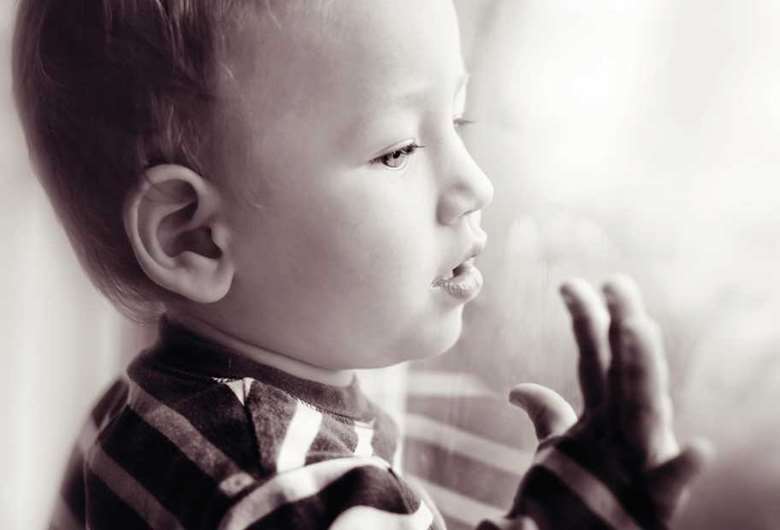Positive Relationships: Behaviour - Time to reflect
Kay Mathieson
Monday, October 6, 2014
Behaviour is not an 'area of need', rather an indicator of other areas of need, says Kay Mathieson in the first of a three-part series on child behaviour in light of the 2014 SEND Code of Practice.

Behaviour is an ever-present concern in our work with children. However, increasingly we have come to understand 'behaviour' in a wider sense, recognising that it is integral to a child's developmental progress.
The recently introduced 2014 SEND Code of Practice provides an opportunity to reflect on our current understanding of SEN in the Early Years Foundation Stage, in particular, the early identification of a child's needs and ensuring that interventions are appropriate and support the child's learning and development.
According to the Code of Practice a child has SEN if: 'they have a learning difficulty or disability which calls for special educational provision to be made for him or her.' (DfE, 2014:4)
AREAS OF NEED
The code identifies four broad 'areas of need', not for categorisation but to clarify the appropriate support and sources for advice. The areas are:
Communication and interaction, including:
- speech, language and communication needs (SCLN)
- Autistic Spectrum Disorder (ASD), Asperger's Syndrome, Autism
Cognition and learning, including:
- Specific learning difficulties (SpLD) including dyslexia, dyscalculia, or dyspraxia
- Moderate and severe learning difficulties (MLD & SLD)
- Profound and multiple learning difficulties (PMLD), likely to include physical, sensory impairment as well as complex learning difficulties
Social emotional and mental health difficulties
- Being withdrawn, isolated, disruptive
- Anxiety
- Attention deficit disorder (ADD), Attention deficit hyperactive disorder (ADHD)
- Attachment disorders
Sensory and/or physical needs, including:
- Visual impairment (VI)
- Hearing impairment (HI)
- Multi-sensory impairment (MSI) (DfE, 2014:74, 86):
It is unlikely that a child's needs will fit neatly into any of these areas - most are likely to span one or more. The balance is also likely to alter over time and as the child matures. Each child is an individual and no label or category can adequately describe their specific characteristics. However, the descriptions of the areas of need in the SEND Code of Practice help to guide our thinking and clarify what we can do to help.
Working in early years means that we have a major role in recognising SEN. It can be difficult and confusing to decide between individual difference in developmental progress and emerging need. Our setting processes for tracking progress are crucial to help us understand typical patterns of progress and current overall development. A child's behaviour is a core part of their communication with us. To tune into a child is to be alert to all of their communication - verbal, non-verbal and behavioural.
Our interpretation of their behaviour should include their ability to verbalise, their understanding, current emotional state, the context at that moment and the relationships with those involved. The clear message about behaviour from the SEND Code of Practice is that it is not an area of need of itself but it can be an indicator of other areas of need.
COMMUNICATION
The development of language underpins our understanding of what is going on and enables us to make connections and communicate our own needs and wishes. Further, language facilitates our thinking, allowing us to link thoughts together, gather information, plan and problem solve. When a child is between two and three years old, typically we see a rapid increase in their ability to understand and use language. Socially, at this time children become increasingly aware of each other, engaging in co-ordinated actions, as well as linking simple cause and effect.
If a child has difficulty with early development of language, they not only struggle with their own communication but are likely to experience frustration in their social connections. These frustrations are likely to be communicated through behaviour such as hitting out, pushing, grabbing and pulling as the child seeks to be part of a group and join in activities (Tassoni, 2014:22). It is important to recognise that, when observed at an earlier age, these strategies are positive signs of interest in, and making contact with others without negative connotations. Adults need to recognise the intention behind actions and look for the reason why frustration is increasing.
Monitoring the progress in language development allows practitioners to put in place responsive strategies such as exploring possible ways to indicate the desire to join in - not just verbal ones but standing close, watching, tapping, copying actions, etc - thus interpreting a benign intention, and not assuming a desire to hurt or spoil a game. Without this alertness in the adults, it is likely that a child's frustrations will increase, leading to greater intensity of hitting, pushing and other similar, negatively perceived behaviours.
Children with specific conditions such as ASD not only show difficulties in language - typically, literal interpretations of verbal language - but also misunderstanding of social situations and related anxiety about predicting likely sequences of events, for example (Wall, 2004:121). Patterns of particular responses over time may well be early indicators of specific SEN.
COGNITION AND LEARNING
A cohesive understanding of the world and our relationships is facilitated through our ability to think and make connections between different aspects of our experience. This includes being able to integrate the sensory information our brain receives, being actively engaged with our environment, and puzzling over how the world works. Where there are difficulties in processing information, the learning will be different.
We each respond to situations as we understand them. Where our perspective differs, the behaviour we demonstrate will also vary. For example, on entering a room and seeing a range of name cards, a child able to recognise their own name may focus on this while others will be attracted by another stimulus. If the child perceives this difference in their own response as a negative, perhaps reinforced by those around them, their behavioural response will be affected, too. They may, for example, try to hide their lack of skill or understanding by following others or attracting attention in other ways such as avoiding the task or engaging others in avoiding the task.
Mental health, social emotional difficulties
Social emotional and mental health difficulties is the area that most obviously links to our thinking about behaviour, but even here we are encouraged to understand the context. What has led to the behaviour we observe and to what extent is it developmentally appropriate? (See also Tassoni et al, 2010:95, 98 and Sharma & Cockerill 2014:106,110 for further information about developmental progress).
For adults, as well as children, there are situations and times when we feel less at ease, more anxious or worried and this changes how we respond. As adults, we have gathered a range of strategies that reduce such emotions or enable us to deal with them. Underlying conditions such as ADHD and ADD impact on how easy or difficult it is to inhibit our immediate emotional response.
Withdrawn, isolated or disruptive patterns of behaviour are worrying in themselves but may also indicate other issues such as domestic violence, abuse, trauma, as well as the fact that the individual may perceive the world as a mainly frightening and threatening place. The Department for Education (DfE) provides a helpful list of risk and protective factors related to mental health in their recent guidance for schools (DfE, 2014:8).
SENSORY AND/OR PHYSICAL NEEDS
As human beings we respond to sensory information, including others' responses to us. This behavioural response plays a significant role in a child's communication. For example:
- - crying when hungry, wriggling and squirming when uncomfortable
- - asserting independence and showing frustration
- - establishing and maintaining peer friendships when there are differences of opinion
- - experimenting with new language structures, beginning to negotiate and argue
- - becoming increasingly aware of own physical abilities in relation to those around him/her and showing frustration or anxiety about being 'the best'.
We tend to link these and other examples to a child's age, but in reality this is more about developmental progress. The SEND Code of Practice supports this thinking and encourages a wider understanding of behaviour as a means of communication. This communication, if understood by the adults, gives important insights into any difficulties the child is experiencing and whether these are more likely to be related to SEN or individual patterns of developmental progress.
So, although 'behaviour' is not specified an 'area of need', it provides many clues about the progress and problems a child may be having at a particular time. We need to become practised in accurately interpreting a child's behavioural communication so that we can hear their voice and be responsive in our support.
MORE INFORMATION
- Department for Education (2014) Mental Health and behaviour in schools: Departmental advice, www.gov.uk/government/publications/mental-health-and-behaviour-in-schools-2
- SEND Code of Practice: 0-25 years, https://www.gov.uk/government/publications/ send-code-of-practice-0-to-25
- A Sharma & H Cockerill (2014) From Birth to Five Years: children's developmental progress, Routledge
- P Tassoni (2014) Getting it Right for Two Year Olds, Hodder Education
- P Tassoni, K Beith, K Bulman, S Griffin (2010) Children and Young People's Workforce, Early Learning and Childcare, Heinemann.
[asset_library_tag 601,Download the PDF]








